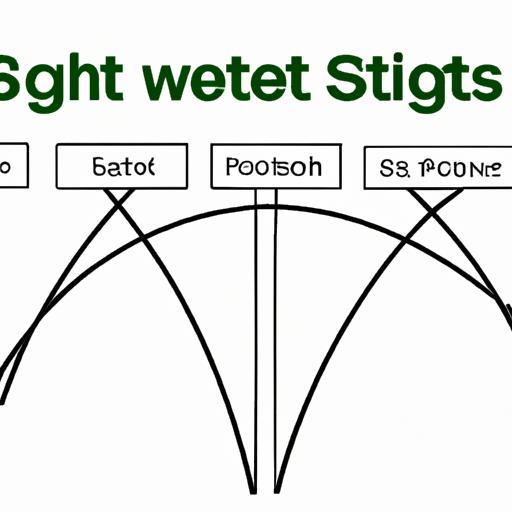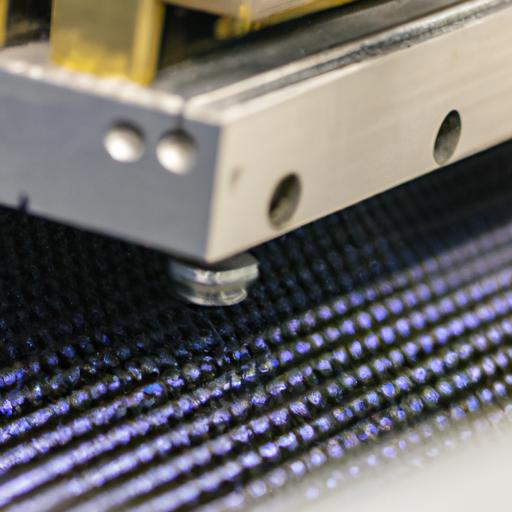Guide to Know about Straight Web Slots: Everything You Need to Know
Are you involved in the manufacturing industry? If so, then understanding straight web slots is crucial. Straight web slots are an essential component of many industrial machines, and having the right knowledge about them can save you time, money, and headaches.
Introduction

Straight web slots are narrow, rectangular holes cut into metal or plastic sheets. They are usually used to guide and support other machine components, such as gears, rollers, and conveyors. Straight web slots are commonly found in industrial machines, such as printing presses, packaging machines, and woodworking equipment.
Understanding the purpose and function of straight web slots is critical to ensuring the proper operation of any machine that uses them. Without this knowledge, you risk selecting the wrong type of straight web slot, which can result in equipment failure, costly repairs, and even safety hazards.
In this guide, we will cover everything you need to know about straight web slots, including how they work, the different types, how to choose the right one, and how to install and maintain them. By the end of this guide, you’ll have the knowledge needed to select and maintain straight web slots for your specific machine and business needs.
How Straight Web Slots Work

If you’re new to the manufacturing industry, you may be wondering how straight web slots work. In this section, we’ll define straight web slots, explain how they differ from other types of slots, and provide an explanation of how they work.
Definition of Straight Web Slots
Straight web slots are narrow, rectangular holes cut into metal or plastic sheets. They are usually placed perpendicular to the direction of travel of machine components, such as gears, rollers, and conveyors. Straight web slots are designed to guide and support these components, ensuring that they move smoothly and accurately.
How Straight Web Slots Differ from Other Types of Slots
While straight web slots are similar to other types of slots, such as keyways and T-slots, there are some key differences. Keyways and T-slots are designed to transmit torque or motion between components, whereas straight web slots are used primarily for guidance and support.
Another key difference is the shape of the slot. Keyways and T-slots are usually wider and deeper than straight web slots, and they often have a specific shape that is matched to a corresponding component. In contrast, straight web slots are usually narrower and shallower, and they have a rectangular shape that can accommodate a variety of components.
Explanation of How Straight Web Slots Work
Straight web slots work by providing a guide for machine components as they move through the machine. When a component is placed in a straight web slot, it is held in place and prevented from moving in any direction other than the intended direction of travel.
This guidance and support are critical for ensuring that the machine operates smoothly and accurately. Without straight web slots, components may move out of place or become misaligned, resulting in equipment failure, costly repairs, and safety hazards.
Types of Straight Web Slots
Straight web slots come in various types, and each has its own unique characteristics, advantages, and disadvantages. Understanding the different types of straight web slots will help you choose the right one for your machine and application. Here are the most common types of straight web slots:
Standard Straight Web Slots
Standard straight web slots are the most basic type of straight web slot. They have a rectangular shape with two parallel sides and two perpendicular sides. They are available in various sizes and materials, making them suitable for a wide range of industrial applications.
Advantages of Standard Straight Web Slots
- Versatile: Standard straight web slots can be used in many types of machines and applications.
- Cost-effective: They are typically the most affordable type of straight web slot.
- Easy to find: Standard straight web slots are widely available and easy to source.
Disadvantages of Standard Straight Web Slots
- Limited functionality: Standard straight web slots may not be suitable for specific applications that require more advanced features.
- Limited customization: They are not customizable, so you may need to compromise on your machine’s design if you can’t find a standard straight web slot that fits your needs.
T-Slots
T-slots are similar to standard straight web slots but have an additional T-shaped groove on the bottom. This groove allows for sliding nuts and bolts to be inserted and secured, providing additional flexibility and adjustability.
Advantages of T-Slots
- Versatile: T-slots can accommodate sliding bolts and nuts, allowing for more adjustability and flexibility in machine design.
- Customizable: The T-groove can be machined to fit specific sizes of bolts and nuts.
- Easy to use: T-slots are easy to install, and bolts and nuts can be quickly added or removed.
Disadvantages of T-Slots
- Limited compatibility: T-slots may not be compatible with certain machine components or designs.
- Cost: T-slots are typically more expensive than standard straight web slots due to the added T-groove feature.
Keyway Slots
Keyway slots are straight web slots with an additional keyway groove machined into the slot’s sides. This groove allows for a key to be inserted, providing a secure and precise connection between the slot and the component it supports.
Advantages of Keyway Slots
- Precise alignment: The keyway groove provides precise alignment between the slot and the component it supports, reducing the risk of misalignment or damage.
- Secure connection: The keyway and key provide a secure connection between the slot and the component, reducing the risk of slippage or movement.
- Customizable: The keyway groove can be machined to fit specific key sizes and shapes.
Disadvantages of Keyway Slots
- Limited compatibility: Keyway slots may not be compatible with certain machine components or designs.
- Cost: Keyway slots are typically more expensive than standard straight web slots due to the added keyway feature.
How to Choose the Right Straight Web Slot
When it comes to choosing the right straight web slot for your machine, there are several factors to consider. Here are some key factors to keep in mind:
Factors to Consider When Choosing a Straight Web Slot
- Load capacity: The load capacity of a straight web slot refers to the amount of weight it can support without deforming. It’s essential to choose a straight web slot that can handle the load of your machine’s components.
- Material: The material of a straight web slot affects its durability, resistance to wear and tear, and overall performance. Common materials include steel, aluminum, and plastic.
- Size and shape: The size and shape of a straight web slot depend on the size and shape of the machine component it will support. Choosing the wrong size or shape can result in improper support and machine failure.
- Coating: Some straight web slots come with specialized coatings that improve their performance in specific environments, such as high temperatures or corrosive atmospheres.
How to Determine the Right Size and Shape
To determine the right size and shape of a straight web slot, you need to consider the dimensions of the machine component it will support. Measure the length, width, and thickness of the component and choose a straight web slot that matches these dimensions. Additionally, consider the orientation of the component and the direction of its movement to ensure that the straight web slot provides adequate support.
Importance of Choosing the Right Materials
Choosing the right material for your straight web slot is critical to ensuring its durability and performance. Steel is a popular material choice due to its strength and resistance to wear and tear. Aluminum is lightweight and corrosion-resistant, making it ideal for use in humid environments. Plastic straight web slots are lightweight, cost-effective, and resistant to impact and corrosion.
By considering these factors and choosing the right size, shape, and material, you can ensure that your machine components are properly supported and that your machine operates efficiently and safely.
Installation and Maintenance of Straight Web Slots
When it comes to installing and maintaining straight web slots, there are several important considerations to keep in mind. Proper installation and maintenance can help ensure the longevity and optimal performance of your machine and its components.
Steps to Install Straight Web Slots
- Determine the correct size and shape of the straight web slot required for your machine and component needs.
- Cut the slot into the metal or plastic sheet using a machine or hand tool.
- Clean the slot to remove any debris or leftover material.
- Install the straight web slot into the machine, ensuring it is flush with the surface and securely fastened.
- Test the machine to ensure the straight web slot is functioning correctly.
Proper Maintenance Techniques to Ensure Longevity
To ensure the longevity and proper operation of your straight web slots, it’s essential to perform regular maintenance. Here are some techniques to consider:
- Clean the slots regularly to remove any debris or buildup that may interfere with their function.
- Inspect the slots for signs of wear or damage, such as cracks, warps, or chips. Replace any damaged slots immediately.
- Lubricate the slots to reduce friction and prevent wear and tear. Use a lubricant that is compatible with the material of the slot and the surrounding components.
- Check the alignment of the slots regularly to ensure they are in the correct position and are not interfering with other machine components.
Common Problems and How to Troubleshoot Them
Despite proper installation and maintenance, straight web slots can still experience problems. Here are some common issues and how to troubleshoot them:
- Misalignment: Check the alignment of the slot and surrounding components. Adjust as necessary.
- Wear and tear: Inspect the slot for signs of wear and replace if necessary.
- Debris buildup: Clean the slot thoroughly to remove any debris or buildup that may be obstructing its function.
By following these installation and maintenance techniques, you can ensure the proper function and longevity of your straight web slots and the components they support.
Conclusion
In conclusion, straight web slots are a critical component of many industrial machines, and it’s essential to understand how they work, the different types, and how to choose, install, and maintain them properly.
By following the guidelines outlined in this guide, you’ll be able to select the right straight web slot for your specific needs, install it correctly, and maintain it for long-lasting and efficient use.
Remember, the key to success is having the right knowledge and understanding of the equipment you’re using. With the information provided in this guide, you’ll be able to make informed decisions about the straight web slots used in your industrial machines, ensuring safety, efficiency, and cost-effectiveness.
Thank you for reading this guide. We hope it has been helpful, and please don’t hesitate to contact us if you have any questions or concerns.